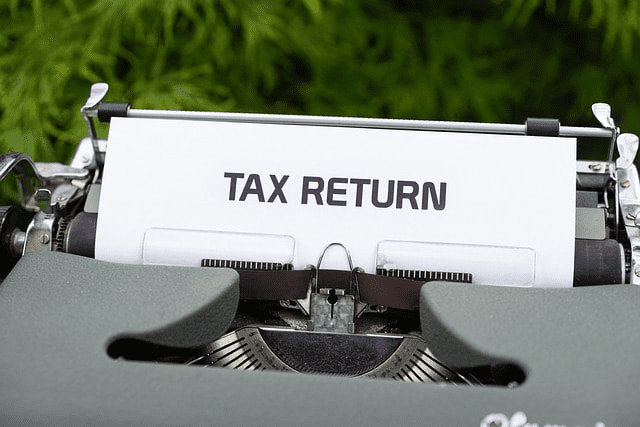The Netherlands is known for its progressive income tax system – the more you earn, the higher the percentage of tax you pay. This system is designed to be fair and transparent, as the government strives for clear and predictable taxation for all. Both residents and non-residents are obliged to pay income taxes.
To categorise income and apply the appropriate tax rates, the Dutch system uses three categories of tax brackets, or boxes: Box 1, Box 2, and Box 3.
The Tax System in the Netherlands
A progressive Dutch taxation system ensures that people who earn higher salaries in the Netherlands pay higher tax percentages. This system strives to achieve fairness by asking those who are in better financial situations to contribute more to society. Income is categorised into three boxes for taxation purposes:
- Box 1 – This is income tax for employment income, business income, worldwide income, pensions, and benefits. It adheres to the progressive tax structure, with tax rates increasing as your taxable income within this box rises.
- Box 2 – Tax on income from substantial shareholdings (when someone owns at least 5% of a company) falls under Box 2.
- Box 3 – Lastly, you’ll pay tax on an income derived from savings and investments. The tax percentage is determined based on a presumed return on your assets and not on the actual gains from them.
Unlike some other countries, the Netherlands does not have additional local income taxes levied on top of the national system.
What Are the Types of Taxes in the Netherlands?
The tax in the Netherlands doesn’t come in a different type of system in a traditional way. Instead, they use a tax system to categorise income and apply corresponding tax rates. This system aims for fairness and simplifies tax administration.
Box 1 – Taxes on Employment Income and Residence
This bracket forms the foundation of the Dutch income tax system. It is applied to employment income, business income, pensions you receive after retirement, and various other benefits you might be entitled to.
This includes your regular salary (even if you are a freelancer, artist, or professional athlete, you’ll pay this tax), tips, wages, bonuses, worldwide income, business profits, and any employer-provided benefits. Government pensions, unemployment benefits, and disability benefits also fall under this bracket.
Box 2 – Taxes on Income from Substantial Interests
This bracket deals specifically with income from substantial interests in a company. If a resident holds a significant stake (at least 5% of the shares, profit-sharing certificates, capital gains, or options) in a company, directly or indirectly, he/she qualifies as having a substantial interest.
When you receive income from this ownership, it falls under Box 2 and includes:
- Dividends – These are profits distributed by the company to all shareholders.
- Capital gains – These are profits shareholders make from selling shares in the company.
The tax rate for Box 2 income in the Netherlands was transformed in 2024 and it currently functions as a two-tier system. For income up to €67,000, a tax rate of 24.5% applies. Income exceeding €67,000 will be taxed at a higher rate of 33%.
This change was implemented to incentivise companies to distribute profits to their shareholders by keeping a larger portion of the income taxed at a lower rate.
Box 3 – Taxes on Income from Savings Accounts and Investments
Unlike taxes in Box 1 and 2, which focus on actual earnings, Box 3 taxes the presumed return on your assets. Meaning, that the Dutch tax authority estimates how much your savings and investments can potentially generate in income instead of taxing the actual gains you might have realised.
To determine your taxable base, the Dutch government calculates the value of your assets minus your debts; an additional allowance is factored in. This allowance acknowledges that not all assets generate income, which can ease the overall tax burden.
Currently, the Netherlands has determined a flat tax rate for Box 3 income, which stands at 0.31%. Even though this seems low, remember that the tax is applied to the total value of your assets, minus debts and the allowance. The positive side is that not all assets are subject to this taxation. Assets excluded are:
- Home ownership – Your primary residence is excluded.
- Personal belongings – Furniture, artwork, and your car (unless it’s considered an investment).
- Certain insurance policies – For instance, life insurance.
- Sustainable and socially responsible investments – Assets like forests, nature conservation projects, cultural preservations, or investments focused on green initiatives.
The negative side of this tax is that sometimes a resident pays taxes even if the investments haven’t yielded any actual returns. The Dutch government is currently reviewing the Box 3 system due to ongoing legal challenges regarding its fairness.
Income Tax Brackets in the Netherlands
| Year | Taxable Income Range | Tax Rate | Second Bracket | Tax Rate | Third Bracket | Tax Rate | Fourth Bracket | Tax Rate |
| 2024 | €0 – €38,098 | 36.97% (9.32% + 27.65%) | €38,099 – €75,518 | 36.97% | Above
€75,518 |
49.50% | \ | \ |
| 2023 | €0 – €37,149 | 36.93% (9.28% + 27.65%) | €37,150 – €73,031 | 36.93% | Above
€73,031 |
49.50% | \ | \ |
| 2022 | €0 – €35,472 | 37.07% (9.42% + 27.65%) | €35,473 – €69,398 | 37.07% | Above €69,398 | 49.50% | \ | \ |
| 2021 | €0 – €35,129 | 37.10% (9.45% + 27.65%) | €35,130 – €68,507 | 37.10% | Above
€68,507 |
49.50% | \ | \ |
| 2020 | €0 – €34,712 | 37.35% (9.70% + 27.65%) | €34,713 – €68,507 | 37.35% | Above
€68,507 |
49.50% | \ | \ |
| 2019 | €0 – €20,384 | 36.65% (9.00% + 27.65%) | €20,385 – €34,300 | 38.10% (10.45% + 27.65%) | €34,301 – €68,507 | 38.10% | Above
€68,507 |
51.75% |
| 2018 | €0 – €20,142 | 36.55% (8.90% + 27.65%) | €20,143 – €33,994 | 40.80% (13.15% + 27.65%) | €33,995 – €68,507 | 40.80% | Above
€68,507 |
51.95% |
| 2017 | €0 – €19,982 | 36.55% (8.90% + 27.65%) | €19,983 – €33,792 | 40.80% (13.15% + 27.65%) | €33,793 – €67,072 | 40.85% | Above €67,072 | 51.95% |
| 2016 | €0 – €19,922 | 36.55% (8.40% + 28.15%) | €19,923 – €33,715 | 40.40% (12.25% + 28.15%) | €33,716 – €66,421 | 40.40% | Above
€66,421 |
52.00% |
| 2015 | €0 – €19,822 | 36.50% (8.35% + 28.15%) | €19,823 – €33,589 | 42.00% (13.85% + 28.15%) | €33,590 – €57,585 | 42.00% | Above
€57,585 |
52.00% |
| 2014 | €0 – €19,645 | 36.25% (8.10% + 28.15%) | €19,646 – €33,363 | 42.00% (13.85% + 28.15%) | €33,364 – €56,531 | 42.00% | Above €56,531 | 52.00% |
The percentage increases as your income rises. For incomes up to €75,518, you’ll pay 36.97% income tax rates. For incomes above €75,518, the income tax rates are 450%. This increase is calculated based on “heffing.” Heffing is a term referring to the applicable tax rate for your specific income bracket.
Your taxable income in Box 1 is calculated after subtracting all applicable deductions from your gross salary. Once you have your taxable income, you’ll know in which bracket you fall and which percentage will be applied to your taxable income.
The heffing percentage acts as the tax rate for that portion of your income. When you multiply your taxable income by the heffing percentage, you’ll get the amount of tax owed for that bracket. For example, if you have a taxable income in Box 1 of €50,000, your entire income falls within the first bracket with an applicable tax rate of 36.97%.
Here’s the calculation formula: Tax owed = Taxable income * Heffing rate
Tax owed = €50,000 * 36.97%
Tax owed: ≈ €18,485
It is necessary to understand heffing because it directly affects the amount of tax you pay. As your income increases and moves into higher brackets, the heffing percentage also increases, resulting in a higher overall tax contribution.
Annual Income Tax Return

The annual Dutch income tax return plays a significant role in ensuring a fair and balanced tax system. It allows the government to assess your total taxable income across all three boxes and determine your final tax liability. This process can end in two ways:
- Tax owed – If the calculated tax liability based on income is higher than the amount withheld throughout the year, a resident is required to pay the remaining balance with a tax return.
- Tax refund – On the contrary, if the total tax withheld exceeds the final tax liability, the resident will receive a tax refund from the Dutch tax authorities.
When to File a Dutch Income Tax Return
The Dutch income tax law obligates both residents and some non-residents to file an annual income tax return. Knowing when to file a return will help you stay in compliance with the law and stay out of trouble.
The following is a summary of the circumstances that require filing a Dutch tax return:
- Residents – A resident taxpayer is someone who spends more than 183 days of the fiscal year in the Netherlands. All residents are generally obligated to file a tax return, regardless of their income source. This comprises earnings from both domestic and international sources, such as jobs, pensions, etc.
- Non-Residents – Those who earn their income in the Netherlands but do not meet the residency requirements may also be required to file a tax return. This could include income from employment, property ownership, or other sources within the Netherlands.
What’s the Deadline for the Annual Income Tax Return in the Netherlands?
The deadline for submitting your tax return is very strict and typically falls on May 1st. The deadline may, however, be extended to July 1st if you receive an invitation letter from the Dutch tax authority (Belastingdienst).
It is essential to respect the deadline and pay income tax on time since there are some fines and penalties included if it is missed. The sooner you file your return, the faster you’ll receive any potential tax refunds you might be entitled to. If you file on time, the Belastingdienst can also process your tax assessment more quickly.
How do I Fill Out a Tax Return in the Netherlands?
Those living and working in the Netherlands are responsible for filing their annual tax return. While this process might seem daunting, it can be streamlined by following these steps:
- Gather Relevant Documents – Compile all documents such as income statements (loonstrook), proof of deductible expenses, and childcare costs.
- Choose Your Filing Method – You can submit your tax return online through the Dutch tax authority’s website if you have your DigiD (digital citizen identification). If not, you need to do it regularly by mail.
- Fill Out the Return – The tax return system asks you questions about deductions, income, and other pertinent information as it walks you through the process.
- Submit Your Return – Make sure you review and finalise the return before submitting it electronically or by mail.
Tax Deductions and Tax Credits
The Dutch tax system recognises that certain annual expenses may affect your tax payment capacity. There are several deductions available in Box 1, which include benefits, pensions, and income from employment. These deductions can help lower your taxable income.
Deductions on expenses related to your job – You may be able to deduct certain costs related to your work from your taxable income if your employer does not pay them back. This includes travel expenses (public transport or car mileage for business trips), professional subscriptions, or home office equipment.
Deductions on costs associated with childcare – The Dutch government understands that childcare can be very expensive. Depending on your income level, and the type of childcare you use, you may be able to deduct a portion of the costs of nursery care for children under 12.
| Scenario | Description | Deductible Percentage (depends on income level; lower-income/higher deduction percentage) | Potential Benefit |
| Family A | Fiscal partner 1 and 2 /combined annual income is €70,000 | 50% | Assume that they use 40 hours of childcare per week at a facility that charges €8 per hour. The cost of the nursery is €16,640 per year (hourly rate * hours per week * weeks per year). By deducting 50%, the deduction of €8,320 from their taxable income will be reduced or refunded. |
| Family B | Single parent/with an annual income of €40,000 | 70% | Assume that their child attends an after-school programme for 20 hours a week at a cost of €5 per hour. It would cost €5,200 a year. They could lower their tax obligation by deducting €3,640 with a 70% deduction. |
However, since there might be a possibility that you are eligible for some other types of deductions as well, it is always advisable to consult the Dutch tax authority or a tax professional and make sure you don’t miss out on any opportunity to save some money.
Tax Credits
The Dutch system also offers tax credits that can further reduce your tax liability. They act as a direct reduction in the amount of tax you owe. Common tax credit options consist of:
- The general tax credit – The majority of taxpayers are eligible for the general tax credit, which is a basic tax reduction.
- Labour tax credit (arbeidskorting) – This credit can be especially helpful for low- and middle-class earners and is intended to encourage work.
- Elderly tax credit (ouderenkorting) – This credit offers tax relief for senior citizens.
Your final tax bill may be considerably reduced by looking into potential deductions and tax credit options. Consult the Belastingdienst website for further details and resources to help you identify the deductions and credits you might be eligible for. Keep in mind that making good use of these options can improve your tax position and possibly result in a bigger tax refund.
Special Considerations: The 30% Ruling for Expats
The Netherlands is aware of the difficulties that highly qualified foreign workers are facing when relocating for employment. In order to draw in and keep this important labour force, the Dutch government provides foreign workers with a 30% salary reduction.
A 30% ruling is a tax benefit programme created to lessen the financial burden on foreign workers. If you meet the requirements, your employer may reimburse you for up to 30% of your salary as a tax-free allowance.
This essentially lowers your taxable income, which lowers your tax liability. The tax-free allowance is reduced over a five-year period (30% in the first 2 years of employment, 20% in years 3–4, and 10% in year 5).
Navigating Dutch Taxes as an Expat
The tax system in the Netherlands can be more complex for expats than for residents. Here’s what will affect your taxes:
- Residence Status – How Dutch taxes apply to you depends on your residency status. You will probably be subject to taxes on your income if you meet the residency requirements, which are more than 183 days in a calendar year. On the other hand, the 30% ruling can drastically lower your tax liability.
- 30% Ruling Eligibility – You must meet specific criteria to qualify for the 30% ruling. Having highly sought-after skills, working for a Dutch employer who hired you from abroad, and receiving pay above a certain level.
- Tax Brackets – Because of the progressive tax system, tax rates rise in proportion to an individual’s income. If you have any remaining taxable income after the 30% ruling, you will be liable for Dutch income tax.
The Netherlands may become a financially appealing location for talent from abroad when they understand how beneficial it is to combine the 30% ruling and the structured tax system.
The Dutch Income Tax Calculator

For foreigners living in the Netherlands, the tax system can seem complicated. The government provides an easy-to-use online tax calculator to assist citizens and expats in estimating their potential tax liability.
You can input your income, deductions, and all other relevant details. The calculator provides an estimate of your taxable income for each tax bracket (Box 1, 2, or 3) and the potential taxes you might owe.
This income tax calculator is a valuable resource for gaining a preliminary understanding of your tax situation and making informed financial decisions.
The Income Tax in the Netherlands: Summarised
The Dutch income tax system offers a balance between fairness and efficiency. The progressive structure in Box 1 ensures that a taxpayer with greater financial gain contributes more to society.
On the other hand, Boxes 2 and 3 cater to specific income types. For residents and expats alike, understanding this system, deductions, credits, and deadlines is essential for navigating tax obligations.
If, by any means, you have doubts or questions, the best thing you can do is to consult a Dutch tax office or tax professional for personalised advice.
And if you’re still considering your move and looking for a job in the Netherlands, explore available job offers and let us know if you have any questions.

 English
English  Lietuvių
Lietuvių  Latviešu
Latviešu  Polski
Polski  Português
Português  Română
Română  Slovenčina
Slovenčina  Magyar
Magyar  Русский
Русский  Espanol
Espanol  България
България  Čeština
Čeština  Italy
Italy  Croatia
Croatia  Greek
Greek 

